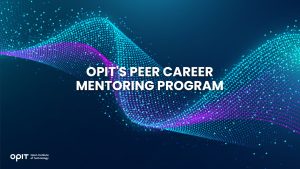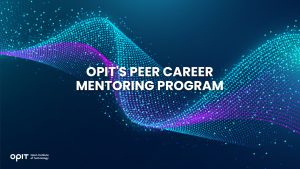

The future looks bright for the data science sector, with the U.S. Bureau of Labor Statistics stating that there were 113,300 jobs in the industry in 2021. Growth is also a major plus. The same resource estimates a 36% increase in data scientist roles between 2021 and 2031, which outpaces the national average considerably. Combine that with attractive salaries (Indeed says the average salary for a data scientist is $130,556) and you have an industry that’s ready and waiting for new talent.
That’s where you come in, as you’re exploring the possibilities in data science and need to find the appropriate educational tools to help you enter the field. A Master’s degree may be a good choice, leading to the obvious question – do you need a Master’s for data science?
The Value of a Masters in Data Science
There’s plenty of value to committing the time (and money) to earning your data science Master’s degree:
- In-depth knowledge and skills – A Master’s degree is a structured course that puts you in front of some of the leading minds in the field. You’ll develop very specific skills (most applying to the working world) and can access huge wellsprings of knowledge in the forms of your professors and their resources.
- Networking opportunities – Access to professors (and similar professionals) enables you to build connections with people who can give you a leg up when you enter the working world. You’ll also work with other students, with your peers offering as much potential for startup ideas and new roles as your professors.
- Increased job opportunities – With salaries in the $130,000 range, there’s clearly plenty of potential for a comfortable career pursuing a subject that you love. Having a Master’s degree in data science on your resume demonstrates that you’ve reached a certain skill threshold for employers, making them more likely to hire you.
Having said all of that, the answer to “do I need a Master’s for data science?” is “not necessarily.” There are actually some downsides to going down the formal studying route:
- The time commitment – Data science programs vary in length, though you can expect to commit at least 12 months of your life to your studies. Most courses require about two years of full-time study, which is a substantial time commitment given that you’ve already earned a degree and have job opportunities waiting.
- Your financial investment – A Master’s in data science can cost anywhere between about $10,000 for an online course to over $50,000 for courses from more prestigious institutions. For instance, Tufts University’s course requires a total investment of $54,304 if you wish to complete all of your credit hours.
- Opportunity cost – When opportunity beckons, committing two more years to your studies may lead to you missing out. Say a friend has a great idea for a startup, or you’re offered a role at a prestigious company after completing your undergraduate studies. Saying “no” to those opportunities may come back to bite you if they’re not waiting for you when you complete your Master’s degree.
Alternatives to a Masters in Data Science
If spending time and money on earning a Master’s degree isn’t to your liking, there are some alternative ways to develop data science skills.
Self-Learning and Online Resources
With the web offering a world of information at your fingertips, self-learning is a viable option (assuming you get something to show for it). Options include the following:
- Online courses and tutorials – The ability to learn at your own pace, rather than being tied into a multi-year degree, is the key benefit of online courses and tutorials. Some prestigious universities (including MIT and Harvard) even offer more bite-sized ways to get into data science. Reputation (both for the course and its providers) can be a problem, though, as some employers prefer candidates with more formal educations.
- Books and articles – The seemingly old-school method of book learning can take you far when it comes to learning about the ins and outs of data science. While published books help with theory, articles can keep you abreast of the latest developments in the field. Unfortunately, listing a bunch of books and articles that you’ve read on a resume isn’t the same as having a formal qualification.
- Data science competitions – Several organizations (such as Kaggle) offer data science competitions designed to test your skills. In addition to giving you the opportunity to wield your growing skillset, these competitions come with the dual benefits of prestige and prizes.
Bootcamps and Certificate Programs
Like the previously mentioned competitions, bootcamps offer intensive tests of your data science skills, with the added bonus of a job waiting for you at the end (in some cases). Think of them like cramming for an exam – you do a lot in a short time (often a few months) to get a reward at the end.
The prospect of landing a job after completing a bootcamp is great, but the study methods aren’t for everybody. If you thrive in a slower-paced environment, particularly one that allows you to expand your skillset gradually, an intensive bootcamp may be intimidating and counter to your educational needs.
Gaining Experience Through Internships and Entry-Level Positions
Any recent graduate who’s seen a job listing that asks for a degree and several years of experience can tell you how much employers value hands-on experience. That’s as true in data science as it is in any other field, which is where internships come in. An internship is an unpaid position (often with a prestigious company) that’s ideal for learning the workplace ropes and forming connections with people who can help you advance your career.
If an internship sounds right for you, consider these tips that may make them easier to find:
- Check the job posting platforms – The likes of Indeed and LinkedIn are great places to find companies (and the people within them) who may offer internships. There are also intern-dedicated websites, such as internships.com, which focus specifically on this type of employment.
- Meet the basic requirements – Most internships don’t require you to have formal qualifications, such as a Master’s degree, to apply. But by the same token, companies won’t accept you for a data science internship if you have no experience with computers. A solid understanding of major programming and scripting languages, such as Java, SQL, and C++, gives you a major head start. You’ve also got a better chance of landing a role if you enrolled in an undergraduate program (or have completed one) in computer science, math, or a similar field.
- Check individual business websites – Not all companies run to LinkedIn or job posting sites when they advertise vacant positions. Some put those roles on their own websites, meaning a little more in-depth searching can pay off. Create a list of companies that you believe you’d enjoy working for and check their business websites to see if they’re offering internships via their sites.
Factors to Consider When Deciding if a Masters Is Necessary
You know that the answer to “Do you need a Master’s for data science?” is “no,” but there are downsides to the alternatives. Being able to prove your skills on a resume is a must, which the self-learning route doesn’t always provide, and some alternatives may be too fast-paced for those who want to take their time getting to grips with the subject. When making your choice, the following four factors should play into your decision-making
Personal Goals and Career Aspirations
The opportunity cost factor often comes into play here, as you may find that some entry-level roles for computer science graduates can “teach you as you go” when it comes to data science. Still, you may not want to feel like you’re stuck in a lower role for several years when you could advance faster with a Master’s under your belt. So, consider charting your ideal career course, with the positions that best align with your goals, to figure out if you’ll need a Master’s to get you to where you want to go.
Current Level of Education and Experience
Some of the options for getting into data science aren’t available to those with limited experience. For example, anybody can make their start with books and articles, which have no barrier to entry. But many internships require demonstrable proof that you understand various programming and scripting languages, with some also asking to see evidence of formal education. As for a Master’s degree, you’ll need a BSc in computer science (or an equivalent degree) to walk down that path.
Financial Considerations
Money makes the educational wheel turn, at least when it comes to formal education. As mentioned, a Master’s in data science can set you back up to $50,000, which may sting (and even be unfeasible) if you already have student loans to pay off for an undergraduate degree. Online courses are more cost-effective (and offer certification), while bootcamps and competitions can either pay you for learning or set you up in a career if you succeed.
Time Commitment and Flexibility
The simple question here is how long do you want to wait to start your career in data science? The patient person can afford to spend a couple of years earning their Master’s degree, and will benefit from having formal and respectable proof of their skills when they’re done. But if you want to get started right now, internships combined with more flexible online courses may provide a faster route to your goal.
A Master’s Degree – Do You Need It to Master Data Science?
Everybody’s answer is different when they ask themselves “do I need a Master’s in data science?” Some prefer the formalized approach that a Master’s offers, along with the exposure to industry professionals that may set them up for strong careers in the future. Others are less patient, preferring to quickly develop skills in a bootcamp, while yet others want a more free-form educational experience that is malleable to their needs and time constraints.
In the end, your circumstances, career goals, and educational preferences are the main factors when deciding which route to take. A Master’s degree is never a bad thing to have on your resume, but it’s not essential for a career in data science. Explore your options and choose whatever works best for you.
Related posts

Source:
- Raconteur, published on November 06th, 2025
Many firms have conducted successful Artificial Intelligence (AI) pilot projects, but scaling them across departments and workflows remains a challenge. Inference costs, data silos, talent gaps and poor alignment with business strategy are just some of the issues that leave organisations trapped in pilot purgatory. This inability to scale successful experiments means AI’s potential for improving enterprise efficiency, decision-making and innovation isn’t fully realised. So what’s the solution?
Although it’s not a magic bullet, an AI operating model is really the foundation for scaling pilot projects up to enterprise-wide deployments. Essentially it’s a structured framework that defines how the organisation develops, deploys and governs AI. By bringing together infrastructure, data, people, and governance in a flexible and secure way, it ensures that AI delivers value at scale while remaining ethical and compliant.
“A successful AI proof-of-concept is like building a single race car that can go fast,” says Professor Yu Xiong, chair of business analytics at the UK-based Surrey Business School. “An efficient AI technology operations model, however, is the entire system – the processes, tools, and team structures – for continuously manufacturing, maintaining, and safely operating an entire fleet of cars.”
But while the importance of this framework is clear, how should enterprises establish and embed it?
“It begins with a clear strategy that defines objectives, desired outcomes, and measurable success criteria, such as model performance, bias detection, and regulatory compliance metrics,” says Professor Azadeh Haratiannezhadi, co-founder of generative AI company Taktify and professor of generative AI in cybersecurity at OPIT – the Open Institute of Technology.
Platforms, tools and MLOps pipelines that enable models to be deployed, monitored and scaled in a safe and efficient way are also essential in practical terms.
“Tools and infrastructure must also be selected with transparency, cost, and governance in mind,” says Efrain Ruh, continental chief technology officer for Europe at Digitate. “Crucially, organisations need to continuously monitor the evolving AI landscape and adapt their models to new capabilities and market offerings.”
An open approach
The most effective AI operating models are also founded on openness, interoperability and modularity. Open source platforms and tools provide greater control over data, deployment environments and costs, for example. These characteristics can help enterprises to avoid vendor lock-in, successfully align AI to business culture and values, and embed it safely into cross-department workflows.
“Modularity and platformisation…avoids building isolated ‘silos’ for each project,” explains professor Xiong. “Instead, it provides a shared, reusable ‘AI platform’ that integrates toolchains for data preparation, model training, deployment, monitoring, and retraining. This drastically improves efficiency and reduces the cost of redundant work.”
A strong data strategy is equally vital for ensuring high-quality performance and reducing bias. Ideally, the AI operating model should be cloud and LLM agnostic too.
“This allows organisations to coordinate and orchestrate AI agents from various sources, whether that’s internal or 3rd party,” says Babak Hodjat, global chief technology officer of AI at Cognizant. “The interoperability also means businesses can adopt an agile iterative process for AI projects that is guided by measuring efficiency, productivity, and quality gains, while guaranteeing trust and safety are built into all elements of design and implementation.”
A robust AI operating model should feature clear objectives for compliance, security and data privacy, as well as accountability structures. Richard Corbridge, chief information officer of Segro, advises organisations to: “Start small with well-scoped pilots that solve real pain points, then bake in repeatable patterns, data contracts, test harnesses, explainability checks and rollback plans, so learning can be scaled without multiplying risk. If you don’t codify how models are approved, deployed, monitored and retired, you won’t get past pilot purgatory.”
Of course, technology alone can’t drive successful AI adoption at scale: the right skills and culture are also essential for embedding AI across the enterprise.
“Multidisciplinary teams that combine technical expertise in AI, security, and governance with deep business knowledge create a foundation for sustainable adoption,” says Professor Haratiannezhadi. “Ongoing training ensures staff acquire advanced AI skills while understanding associated risks and responsibilities.”
Ultimately, an AI operating model is the playbook that enables an enterprise to use AI responsibly and effectively at scale. By drawing together governance, technological infrastructure, cultural change and open collaboration, it supports the shift from isolated experiments to the kind of sustainable AI capability that can drive competitive advantage.
In other words, it’s the foundation for turning ambition into reality, and finally escaping pilot purgatory for good.

The Open Institute of Technology (OPIT) is the perfect place for those looking to master the core skills and gain the fundamental knowledge they need to enter the exciting and dynamic environment of the tech industry. While OPIT’s various degrees and courses unlock the doors to numerous careers, students may not know exactly which line of work they wish to enter, or how, exactly, to take the next steps.
That’s why, as well as providing exceptional online education in fields like Responsible AI, Computer Science, and Digital Business, OPIT also offers an array of career-related services, like the Peer Career Mentoring Program. Designed to provide the expert advice and support students need, this program helps students and alumni gain inspiration and insight to map out their future careers.
Introducing the OPIT Peer Career Mentoring Program
As the name implies, OPIT’s Peer Career Mentoring Program is about connecting students and alumni with experienced peers to provide insights, guidance, and mentorship and support their next steps on both a personal and professional level.
It provides a highly supportive and empowering space in which current and former learners can receive career-related advice and guidance, harnessing the rich and varied experiences of the OPIT community to accelerate growth and development.
Meet the Mentors
Plenty of experienced, expert mentors have already signed up to play their part in the Peer Career Mentoring Program at OPIT. They include managers, analysts, researchers, and more, all ready and eager to share the benefits of their experience and their unique perspectives on the tech industry, careers in tech, and the educational experience at OPIT.
Examples include:
- Marco Lorenzi: Having graduated from the MSc in Applied Data Science and AI program at OPIT, Marco has since progressed to a role as a Prompt Engineer at RWS Group and is passionate about supporting younger learners as they take their first steps into the workforce or seek career evolution.
- Antonio Amendolagine: Antonio graduated from the OPIT MSc in Applied Data Science and AI and currently works as a Product Marketing and CRM Manager with MER MEC SpA, focusing on international B2B businesses. Like other mentors in the program, he enjoys helping students feel more confident about achieving their future aims.
- Asya Mantovani: Asya took the MSc in Responsible AI program at OPIT before taking the next steps in her career as a Software Engineer with Accenture, one of the largest IT companies in the world, and a trusted partner of the institute. With a firm belief in knowledge-sharing and mutual support, she’s eager to help students progress and succeed.
The Value of the Peer Mentoring Program
The OPIT Peer Career Mentoring Program is an invaluable source of support, inspiration, motivation, and guidance for the many students and graduates of OPIT who feel the need for a helping hand or guiding light to help them find the way or make the right decisions moving forward. It’s a program built around the sharing of wisdom, skills, and insights, designed to empower all who take part.
Every student is different. Some have very clear, fixed, and firm objectives in mind for their futures. Others may have a slightly more vague outline of where they want to go and what they want to do. Others live more in the moment, focusing purely on the here and now, but not thinking too far ahead. All of these different types of people may need guidance and support from time to time, and peer mentoring provides that.
This program is also just one of many ways in which OPIT bridges the gaps between learners around the world, creating a whole community of students and educators, linked together by their shared passions for technology and development. So, even though you may study remotely at OPIT, you never need to feel alone or isolated from your peers.
Additional Career Services Offered by OPIT
The Peer Career Mentoring Program is just one part of the larger array of career services that students enjoy at the Open Institute of Technology.
- Career Coaching and Support: Students can schedule one-to-one sessions with the institute’s experts to receive insightful feedback, flexibly customized to their exact needs and situation. They can request resume audits, hone their interview skills, and develop action plans for the future, all with the help of experienced, expert coaches.
- Resource Hub: Maybe you need help differentiating between various career paths, or seeing where your degree might take you. Or you need a bit of assistance in handling the challenges of the job-hunting process. Either way, the OPIT Resource Hub contains the in-depth guides you need to get ahead and gain practical skills to confidently move forward.
- Career Events: Regularly, OPIT hosts online career event sessions with industry experts and leaders as guest speakers about the topics that most interest today’s tech students and graduates. You can join workshops to sharpen your skills and become a better prospect in the job market, or just listen to the lessons and insights of the pros.
- Internship Opportunities: There are few better ways to begin your professional journey than an internship at a top-tier company. OPIT unlocks the doors to numerous internship roles with trusted institute partners, as well as additional professional and project opportunities where you can get hands-on work experience at a high level.
In addition to the above, OPIT also teams up with an array of leading organizations around the world, including some of the biggest names, including AWS, Accenture, and Hype. Through this network of trust, OPIT facilitates students’ steps into the world of work.
Start Your Study Journey Today
As well as the Peer Career Mentoring Program, OPIT provides numerous other exciting advantages for those who enroll, including progressive assessments, round-the-clock support, affordable rates, and a team of international professors from top universities with real-world experience in technology. In short, it’s the perfect place to push forward and get the knowledge you need to succeed.
So, if you’re eager to become a tech leader of tomorrow, learn more about OPIT today.
Have questions?
Visit our FAQ page or get in touch with us!
Write us at +39 335 576 0263
Get in touch at hello@opit.com
Talk to one of our Study Advisors
We are international
We can speak in:


